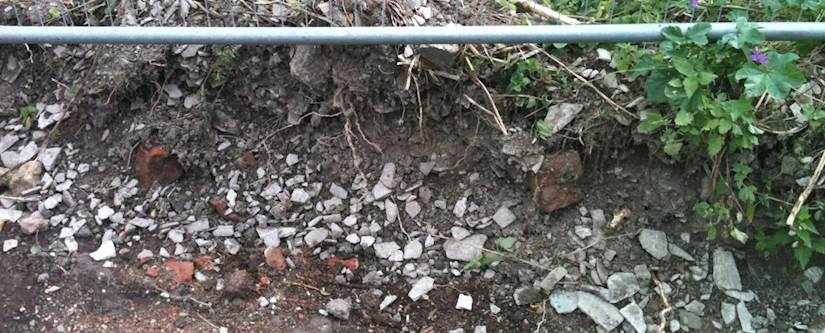
Asbestos - Our Pragmatic Approach
In our previous blog post, we discussed the new industry guidance released and how it might affect you. We mentioned our 'pragmatic approach' in reference to this but, in the interests of being useful, approachable people, it seemed easier to cut the tech talk and just show you an example of a site we've recently worked on, so that you could really get a feel for what we're talking about.
In this particular case we found chrysotile fibres within more than half of the samples of made ground from the site, however, subsequent quantification analysis established that fibres were only present above the minimum detection limit (0.001%) at two locations out of the five identified, where concentrations of 0.004% and 0.002% were given respectively. Impacts to made ground from Asbestos Containing Material (ACM) were not unexpected given the identification of ACM as part of the desk study work and the storage of ACM within an on-site skip which was noted during the site investigation works.
In the absence of any commonly accepted screening criteria associated with asbestos in shallow soils and the associated risks it may pose to site end users, EPS considered the following ‘lines of evidence’ common sense approach relevant to the situation at this site.
- 'Although statistically the result is likely to be representative of low concentrations of asbestos in soils across the site, the fact that these concentrations only exceed minimum laboratory detection levels (<0.001%) in two of the samples out of eight possible results, indicates that levels of asbestos present across the site do not pose a significant risk to redevelopment workers and future site users. In the absence of a critical concentration, (assessment criteria in a planning context) for the contaminant, it is difficult to present further statistical analysis beyond this reasoning.
- Asbestos only poses a risk to human health through inhalation of airborne fibres. The concentrations identified in the samples represent soil concentrations, so although it is theoretically possible that asbestos fibres present in the soil may become airborne, the likelihood of all of the asbestos fibres present becoming airborne is highly unlikely. The concentration (of airborne fibres) which has the potential to cause harm will almost certainly be lower than the maximum soil concentration recorded (≤0.004% mass).
- The results provided by the lab are based on the dry weight of the soil sample whereby the loss of moisture from the original sample is not reflected in the % by mass result. This may, therefore, result in a slight over-estimate in the result relative to the original soil concentration.
- The results are well below the hazardous waste threshold (<0.1%).'
On the basis of the above information, the risks from asbestos at this site were considered to be low, however, as a precautionary approach consideration of control measures through which any such low risks could be appropriately mitigated would be required. One such control measure which would be considered appropriate is the installation of a layer of clean imported material into proposed areas of domestic garden or landscaping. It was also considered that any potential short term risks associated with exposure of soils to construction workers involved with redevelopment work could be appropriately controlled through standard health and safety precautions and ways in which this could be done were communicated to the client.